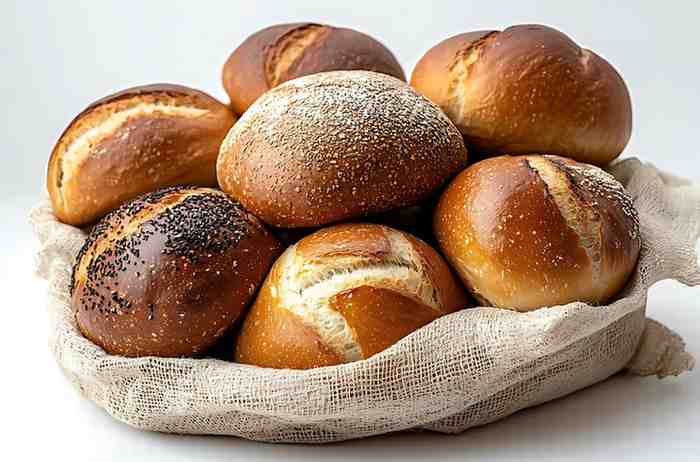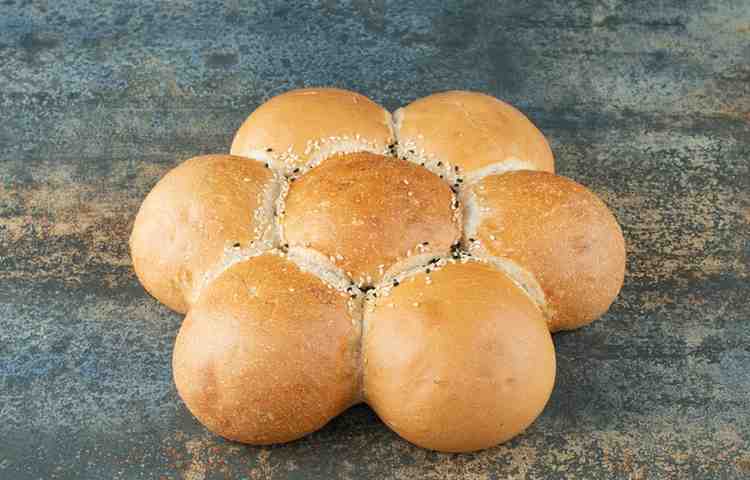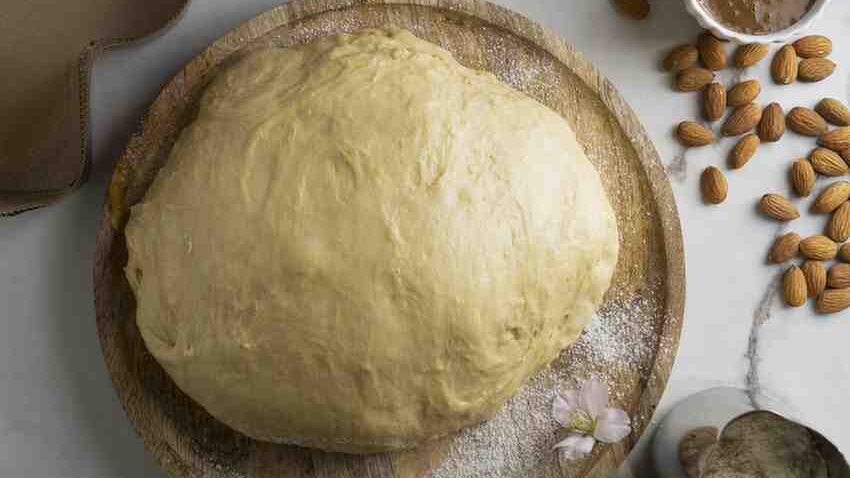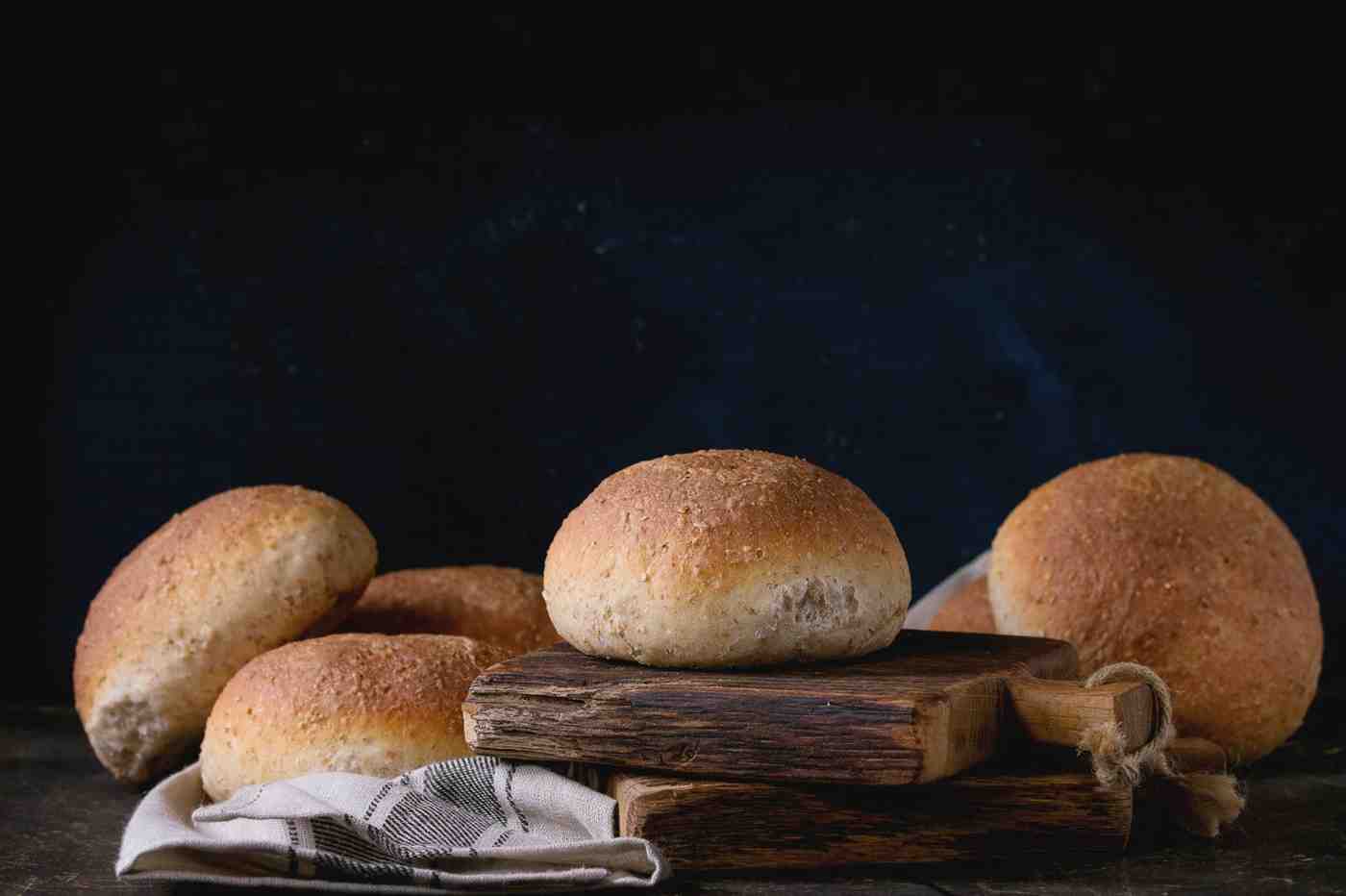Keto baking has revolutionized the way low-carb enthusiasts enjoy their favorite bread and pastries. While traditional buns and rolls are high in carbohydrates, keto alternatives are crafted to fit perfectly within a ketogenic diet without sacrificing taste or texture. With ingredients like almond flour and psyllium husk, keto buns and rolls offer a delicious solution for those looking to avoid carbs while still enjoying soft, fluffy bread. In this guide, we’ll explore everything you need to know about making keto buns and rolls at home, from key ingredients to tips for achieving the perfect texture.
What Are Keto Buns and Rolls?
Keto buns and rolls are low-carb versions of traditional bread, designed specifically for those following a ketogenic or low-carb diet. Unlike conventional buns, which rely on wheat flour (packed with carbohydrates), keto buns use alternatives like almond flour and psyllium husk to maintain a soft, fluffy texture. These ingredients are low in carbs but high in healthy fats and fiber, making them perfect for maintaining ketosis.
Traditional bread may have a light, airy structure due to gluten, but keto buns rely on other techniques and ingredients to achieve similar results. Despite the differences, keto buns can taste just as satisfying as regular bread, especially when paired with burgers, sandwiches, or even as standalone dinner rolls.
Key Ingredients in Keto Buns
The secret to perfect keto buns lies in the ingredients, which not only keep the carb count low but also contribute to texture and flavor.
- Almond Flour: This is the base of most keto bread recipes. Almond flour is low in carbohydrates and rich in healthy fats. It provides a dense structure, which is crucial for holding the bun’s shape.
- Psyllium Husk: Psyllium husk adds bulk and fiber to the dough. It absorbs water, helping the buns retain moisture while creating a fluffy, bread-like texture. It’s also responsible for giving keto buns their signature chew.
- Eggs: Eggs act as a binder and provide structure to the dough, ensuring the buns rise properly and have a tender crumb.
- Butter or Coconut Oil: These fats enrich the dough, contributing to the softness and flavor of the buns. They also help keep the buns moist and tender, even after baking.
- Baking Powder: This leavening agent helps the dough rise, adding airiness and lightness to the buns.
Tips for Airy, Light Keto Buns
Creating the perfect keto buns requires some practice, but these tips will help you achieve fluffy, light buns every time:
- Use Psyllium Husk Correctly: Ensure the psyllium husk is finely ground. Larger flakes may result in an uneven texture.
- Avoid Overmixing: Once the ingredients are combined, mix the dough until just incorporated. Overmixing can make the buns dense.
- Let the Dough Rest: After mixing, let the dough rest for 10-15 minutes. This allows the psyllium husk to fully absorb the moisture, which helps with the buns’ structure.
- Baking Temperature Matters: Bake the buns at a steady temperature (around 350°F/180°C) to avoid overbrowning on the outside while keeping the inside soft and fluffy.
By following these simple tips, you can avoid common pitfalls like dry, dense buns and enjoy keto buns with a light and airy texture.

Step-by-Step Guide to Making Keto Buns and Rolls
Making keto buns at home is easy and rewarding. Here’s a basic recipe to get you started:
Ingredients:
- 2 cups almond flour
- 2 tablespoons psyllium husk powder
- 1 teaspoon baking powder
- 1/2 teaspoon salt
- 3 large eggs
- 1/4 cup melted butter or coconut oil
- 1 cup warm water
Instructions:
- Preheat the Oven: Set your oven to 350°F (180°C) and line a baking sheet with parchment paper.
- Mix the Dry Ingredients: In a large bowl, combine almond flour, psyllium husk powder, baking powder, and salt.
- Add the Wet Ingredients: Whisk the eggs and melted butter (or coconut oil) together. Pour the wet ingredients into the dry mixture and stir until fully combined.
- Add Warm Water: Slowly pour in the warm water while mixing. The dough should start to thicken as the psyllium husk absorbs the moisture.
- Form the Buns: Shape the dough into 6-8 buns and place them on the prepared baking sheet.
- Bake: Bake for 25-30 minutes or until the buns are golden brown and firm to the touch.
- Cool: Allow the buns to cool slightly before serving.
Pro Tips:
- For a glossy finish, brush the tops of the buns with egg wash before baking.
- For added flavor, sprinkle sesame or poppy seeds on top before placing them in the oven.
By following this step-by-step recipe, you’ll create keto buns that are perfect for any meal, whether you’re using them for burgers, sandwiches, or simply enjoying them with butter.
Keto Brioche Buns
Keto brioche buns are a richer, more decadent version of standard keto buns. These buns have a soft, airy texture similar to traditional French brioche but without the high carb count. They use similar ingredients to keto buns but with added butter and sometimes sweeteners to achieve that signature richness.
How to Make Keto Brioche Buns
The key to making keto brioche buns is using almond flour as the base and adding extra fats like butter to mimic the rich, soft crumb of traditional brioche. Here’s a quick overview:
- Ingredients: Almond flour, psyllium husk, butter, eggs, a low-carb sweetener (optional), and baking powder.
- Process: Mix dry and wet ingredients, shape the dough, and bake at a moderate temperature. These buns take slightly longer to bake than regular keto buns due to the higher fat content.
- Texture and Flavor: The result is a bun that is soft, slightly sweet (if using sweetener), and perfect for breakfast sandwiches or as a standalone treat.
Keto Buns Variations and Flavor Ideas
Keto buns and rolls are highly versatile and can be customized to suit your taste. Here are a few ideas for both savory and sweet variations:
Savory Options:
- Cheese and Herb Buns: Add shredded cheese (like cheddar or parmesan) and fresh herbs (like rosemary or thyme) to the dough before baking.
- Garlic Butter Rolls: Brush the tops of the buns with garlic-infused butter for an extra burst of flavor.
- Spiced Rolls: Mix spices like cumin, paprika, or oregano into the dough for a flavorful twist.
Sweet Options:
- Cinnamon Rolls: Add a dash of cinnamon and a keto-friendly sweetener to the dough for a sweet treat. You can top it off with a cream cheese glaze for a classic cinnamon roll feel.
- Vanilla-Almond Buns: Incorporate vanilla extract and a touch of almond extract into the dough for a subtly sweet and aromatic bun.
- Berry-Filled Rolls: Create a sweet filling with berries and a keto-friendly sweetener, rolling it into the dough before baking.
These variations can help you turn basic keto buns into something special for any meal, whether you’re looking for a savory side dish or a sweet breakfast roll.

What is Keto Puff Pastry?
Keto puff pastry is a low-carb adaptation of traditional puff pastry, which is typically made with wheat flour and lots of butter. Traditional puff pastry gets its flaky layers from a process called lamination, where butter is repeatedly folded into the dough. The heat of the oven causes the butter to steam, creating crisp, flaky layers. In keto puff pastry, we replace wheat flour with keto-friendly ingredients, like almond flour, and sometimes add xanthan gum to help mimic the elasticity of gluten.
How Does Keto Puff Pastry Differ from Traditional Puff Pastry?
While traditional puff pastry relies on gluten and wheat flour for structure, keto puff pastry uses ingredients like almond flour, which has a different texture. As a result, keto puff pastry can be slightly denser but still produces light, crispy layers when properly prepared.
The main differences include:
- No Gluten: Keto puff pastry is gluten-free, which means it requires a binding agent, like xanthan gum, to achieve structure and flexibility.
- Almond Flour: This low-carb alternative to wheat flour forms the base of keto puff pastry. It’s higher in fat and fiber, making it ideal for a ketogenic diet.
- Butter: Like traditional puff pastry, butter is still essential in creating the layers in keto puff pastry.

Keto Puff Pastry Recipe: Step-by-Step Guide
Ingredients:
- 1 1/2 cups almond flour
- 1/4 cup coconut flour
- 2 tablespoons psyllium husk powder
- 1/2 teaspoon xanthan gum
- 1/2 teaspoon salt
- 1 cup cold butter (cubed)
- 1/2 cup cold water
- 1 large egg (for egg wash)
Instructions:
- Combine Dry Ingredients: In a bowl, whisk together the almond flour, coconut flour, psyllium husk powder, xanthan gum, and salt.
- Cut in the Butter: Add the cold, cubed butter to the dry ingredients. Using a pastry cutter or your fingers, work the butter into the flour until it resembles coarse crumbs.
- Add Cold Water: Gradually add the cold water to the mixture, stirring until the dough comes together. Be careful not to overmix—stop as soon as the dough holds its shape.
- Chill the Dough: Form the dough into a ball, wrap it in plastic wrap, and refrigerate for at least 30 minutes. This ensures the butter stays cold and firm, which is crucial for creating flaky layers.
- Roll and Fold: On a floured surface (use almond flour), roll out the dough into a rectangle. Fold the dough into thirds, like folding a letter. Rotate the dough, roll it out again, and fold. Repeat this process 3-4 times to create the layers.
- Chill Again: After folding, refrigerate the dough for another 30 minutes to allow it to firm up.
- Bake: Preheat your oven to 350°F (180°C). Roll out the dough to your desired thickness, cut it into shapes, and brush with egg wash. Bake for 20-25 minutes or until golden brown and flaky.
Tips for Success:
- Keep the Butter Cold: Always ensure the butter remains cold throughout the process to create distinct layers.
- Don’t Overwork the Dough: Overmixing or handling the dough too much can break down the butter and ruin the flakiness.
- Refrigerate Between Folds: Chilling between folds is essential to maintain the layers. Skipping this step can result in a dense dough.
By following these steps, you can create keto puff pastry that is crisp, flaky, and perfect for both sweet and savory dishes.
Keto Brioche Puff Pastry: A Fusion of Two Classics
Keto brioche puff pastry is a unique combination of two iconic pastries: brioche and puff pastry. Brioche is a rich, buttery bread, while puff pastry is known for its flaky layers. Combining these two in a keto-friendly version means you can enjoy a pastry that’s both tender and flaky, with the added richness of brioche dough.
Ingredients for Keto Brioche Puff Pastry:
- 2 cups almond flour
- 2 tablespoons psyllium husk powder
- 1/2 cup butter (softened for the brioche dough)
- 1/2 cup cold butter (for lamination)
- 3 large eggs
- 1 tablespoon erythritol (optional, for sweetness)
- 1 teaspoon baking powder
- 1/4 cup cold water
- 1 egg (for egg wash)
Step-by-Step Instructions:
- Make the Brioche Dough: In a bowl, mix the almond flour, psyllium husk, baking powder, and erythritol. Add the softened butter and eggs, mixing until a dough forms.
- Chill the Dough: Wrap the dough in plastic wrap and refrigerate for 30 minutes to firm it up.
- Prepare for Lamination: Once the dough is chilled, roll it out into a rectangle. Take the cold butter and place it in the center. Fold the dough over the butter, then roll it out again, creating layers as you fold the dough multiple times.
- Refrigerate: Chill the dough between folds, ensuring the butter stays cold. Repeat the folding process 3-4 times to achieve enough layers.
- Final Rise: After the final fold, let the dough rest for about 20-30 minutes before baking.
- Bake: Preheat your oven to 350°F (180°C). Roll out the dough to your desired thickness and cut into shapes. Brush with egg wash and bake for 25-30 minutes or until golden and flaky.
Tips for Perfect Keto Brioche Puff Pastry:
- Control the Dough Temperature: Cold butter is essential to maintaining the layers, so refrigerate as needed between folding steps.
- Fold with Care: Handle the dough gently to avoid breaking the butter layers. Too much pressure can cause the dough to become dense.
- Add a Sweet Touch: For a dessert version, you can sprinkle low-carb sweeteners like erythritol or cinnamon between the layers for extra flavor.
Keto brioche puff pastry is ideal for both sweet and savory dishes, whether you’re making a low-carb croissant or a pastry filled with keto-friendly chocolate or cheese.
Frequently Asked Questions About Keto Puff Pastry and Brioche
Can I Make Keto Brioche Puff Pastry with Almond Flour?
Yes, almond flour is the primary ingredient in keto-friendly brioche puff pastry. It works well to replace wheat flour, though it creates a slightly denser dough. However, by using enough butter and proper lamination techniques, you can achieve layers similar to traditional puff pastry.
How Do I Make Keto Puff Pastry with Almond Flour?
The key is to mix almond flour with other ingredients like psyllium husk and xanthan gum to mimic the elasticity of wheat flour. Cold butter and a careful folding process will help you achieve the flaky layers that are characteristic of puff pastry.
Can I Use Coconut Flour Instead of Almond Flour?
Coconut flour is much more absorbent than almond flour, so it isn’t a direct substitute. If you choose to use coconut flour, reduce the amount and adjust the liquid in the recipe to maintain the right dough consistency.
How Do I Store Keto Puff Pastry?
You can store unbaked keto puff pastry in the fridge for up to 3 days or freeze it for up to 2 months. Thaw in the fridge overnight before baking.

